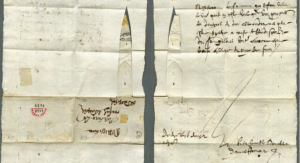On the eve of her execution in 1587, Mary, Queen of Scots wrote what is thought to be her very last letter.
She had been imprisoned for nearly 20 years for the perceived threat she represented to Queen Elizabeth I in terms of a takeover of the English throne. With hours to go until her beheading, Mary sat down and penned what researchers say was not only her last will and testament, but also a bid for martyrdom.
To keep her message safe, Mary turned to the 16th-century equivalent of sending an encrypted email — a folding technique known as the spiral lock. Using an elaborate series of slits, folds and tucks, she turned the letter into a piece of tamper-proof priority mail.
Her technique was so elaborate and complex that researchers have struggled throughout modern history to fully understand how she did it. But now, experts at the Massachusetts Institute of Technology and King’s College London say they finally have cracked the code.
UK: Calls for ban on Sunday driving and motorway speed limits as oil prices rise
In a paper published in the Electronic British Library Journal, the researchers detail the dizzying series of steps that Mary used to safeguard the letter.
Read more: NPR
Ask me anything
Explore related questions





